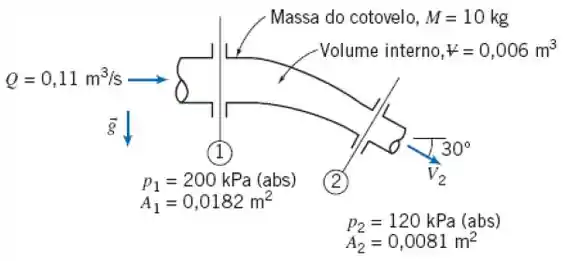4.92 Um cotovelo redutor de 30° é mostrado. O fluido é água. Avalie as componentes da força que deve ser aplicada pelos tubos adjacentes para manter o cotovelo estático.

Passo 1
Vamos começar pelos dados que conseguimos tirar da vazão, ou seja, e .
Passo 2
Para a componente x da equação da quantidade de movimento:
Passo 3
Para a componente y da equação da quantidade de movimento: